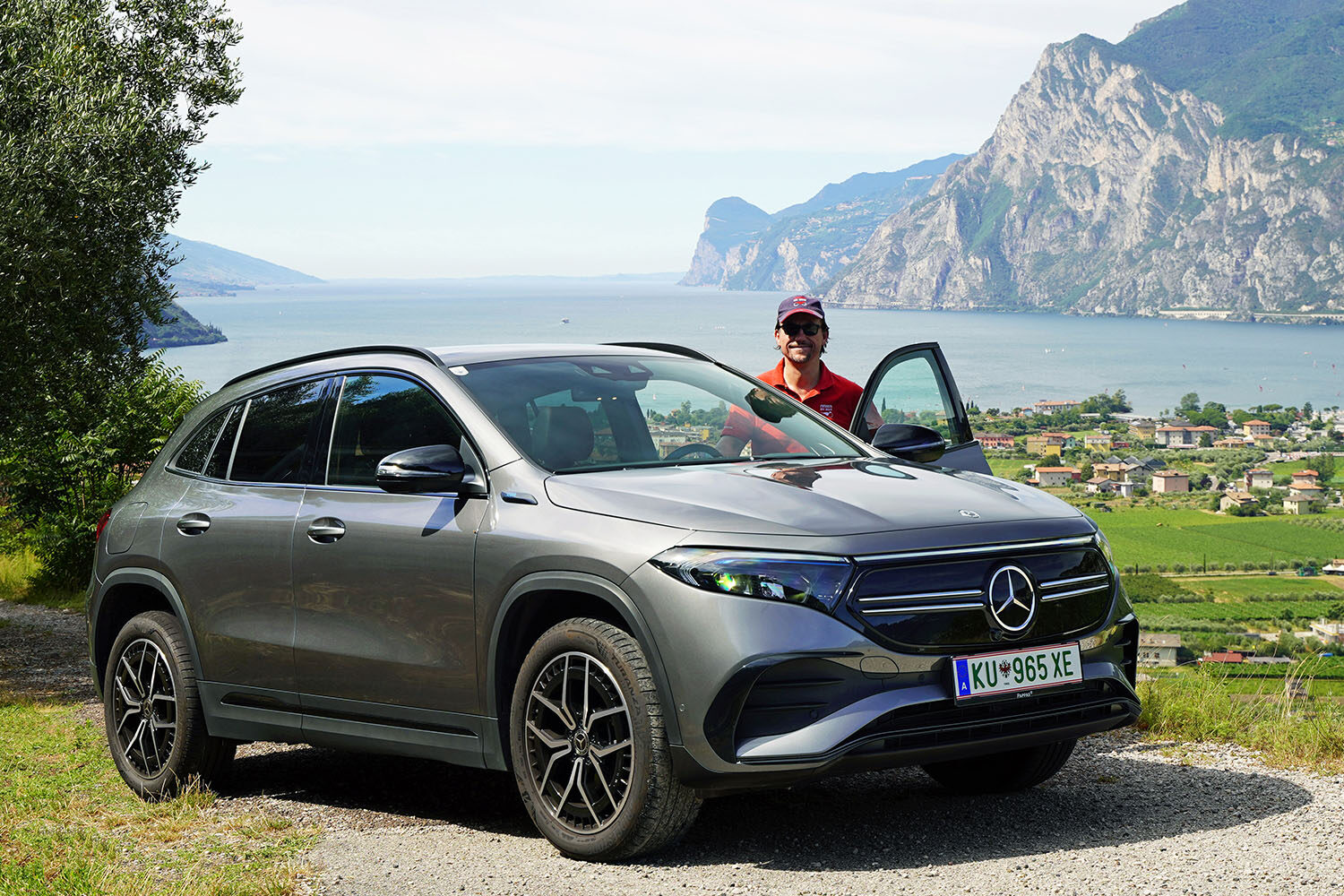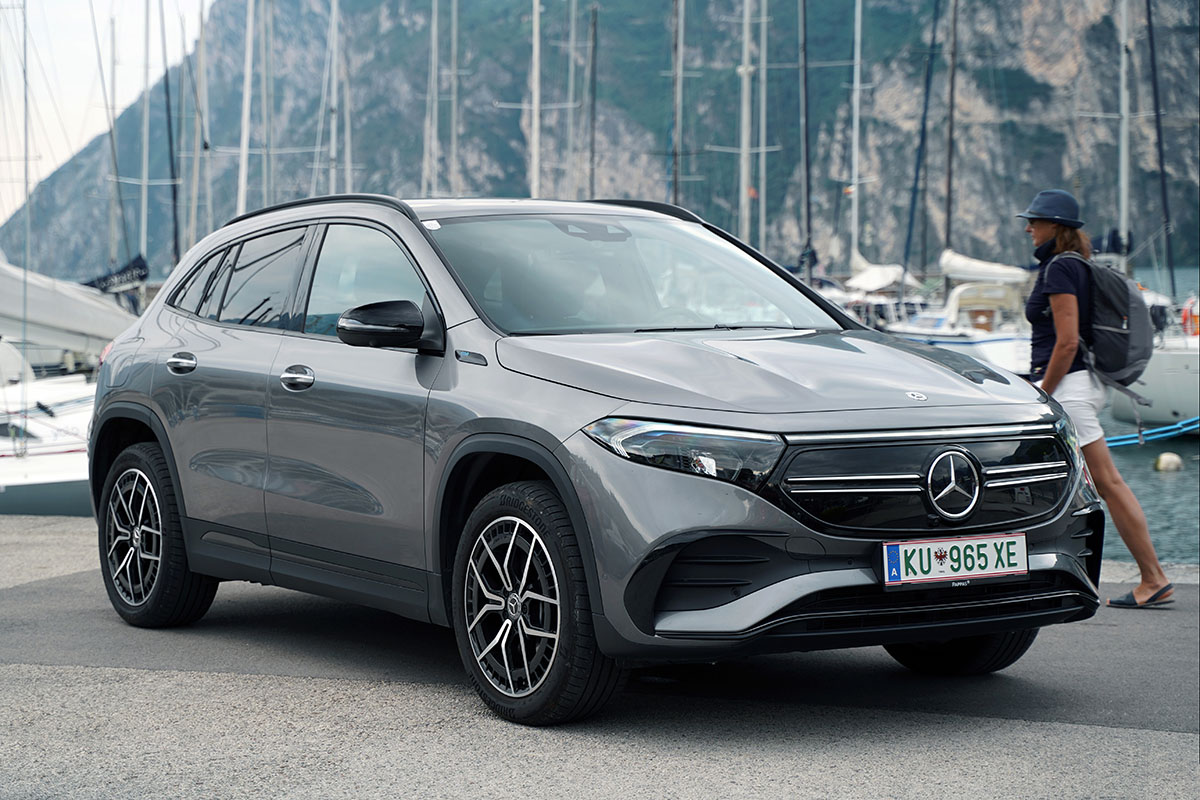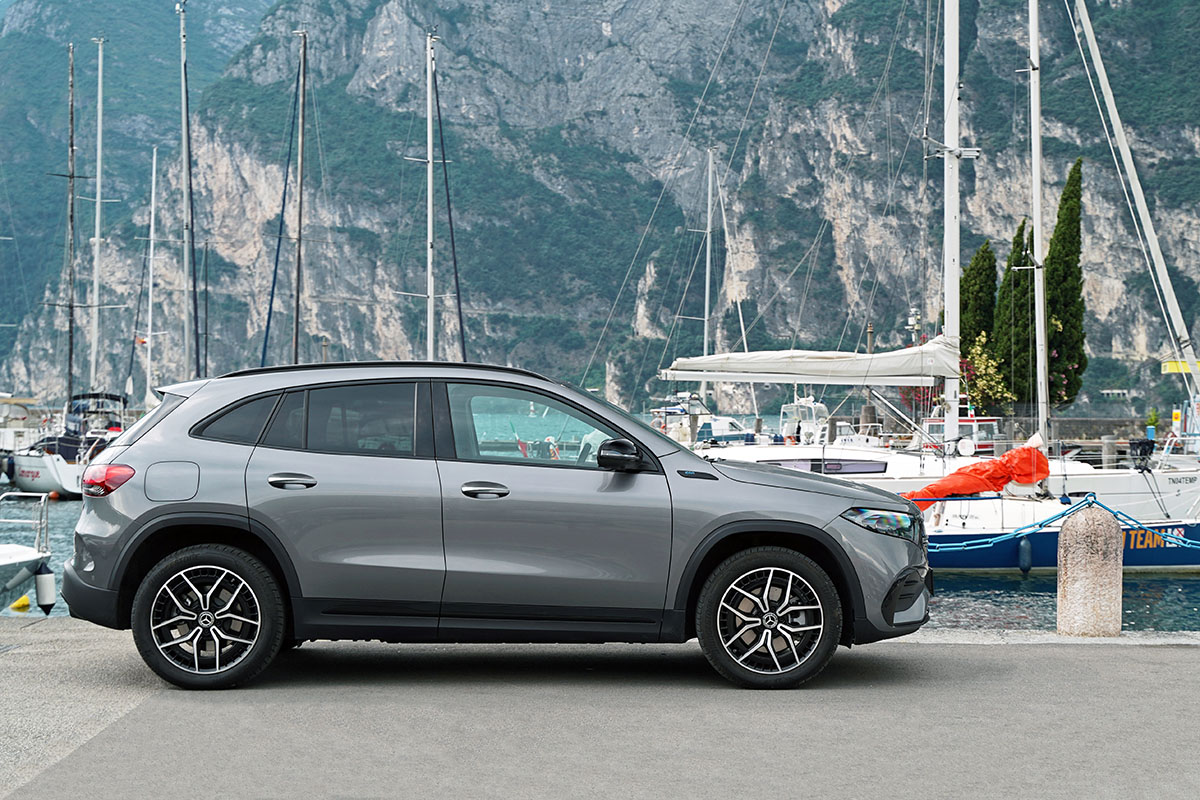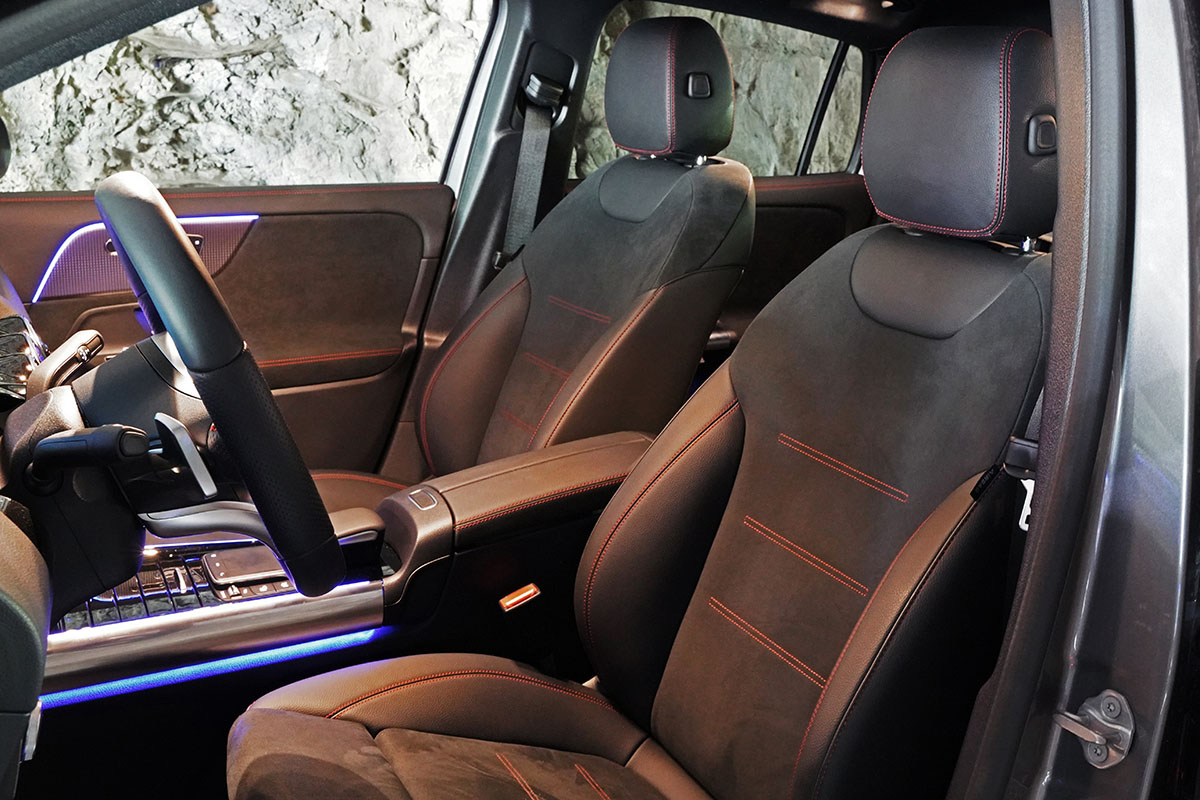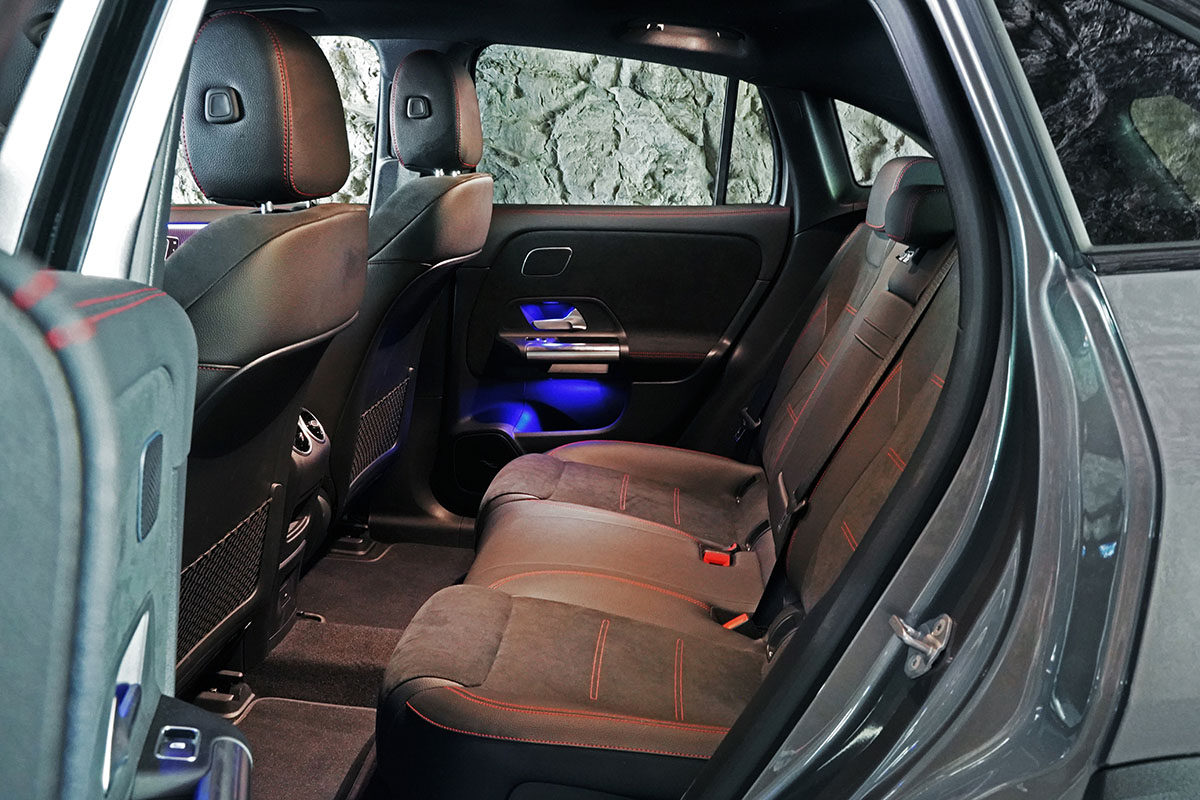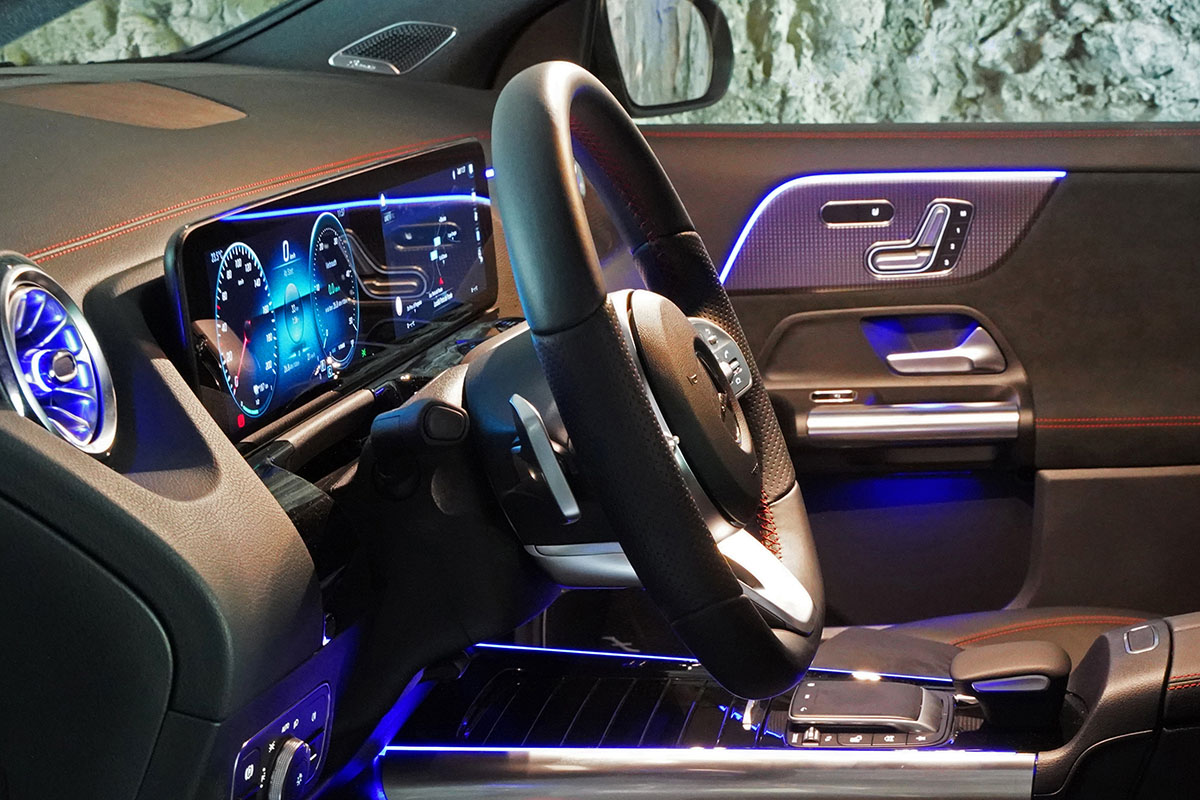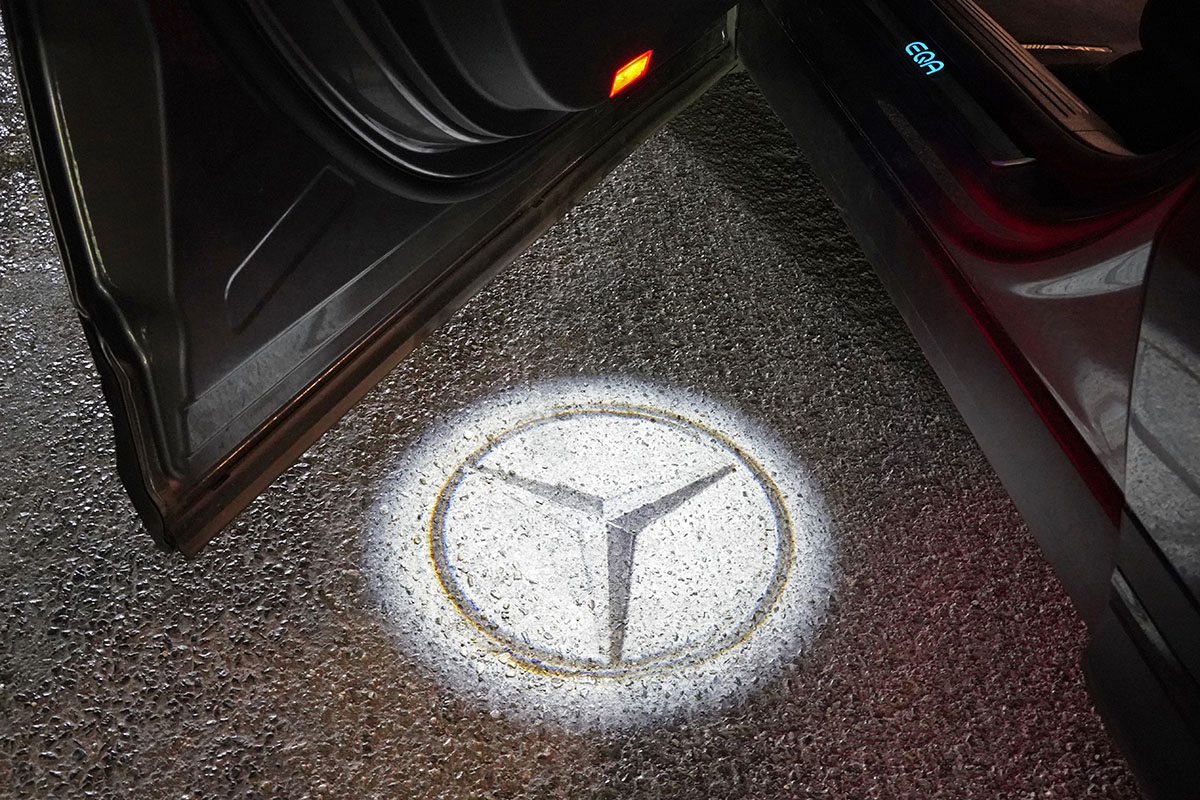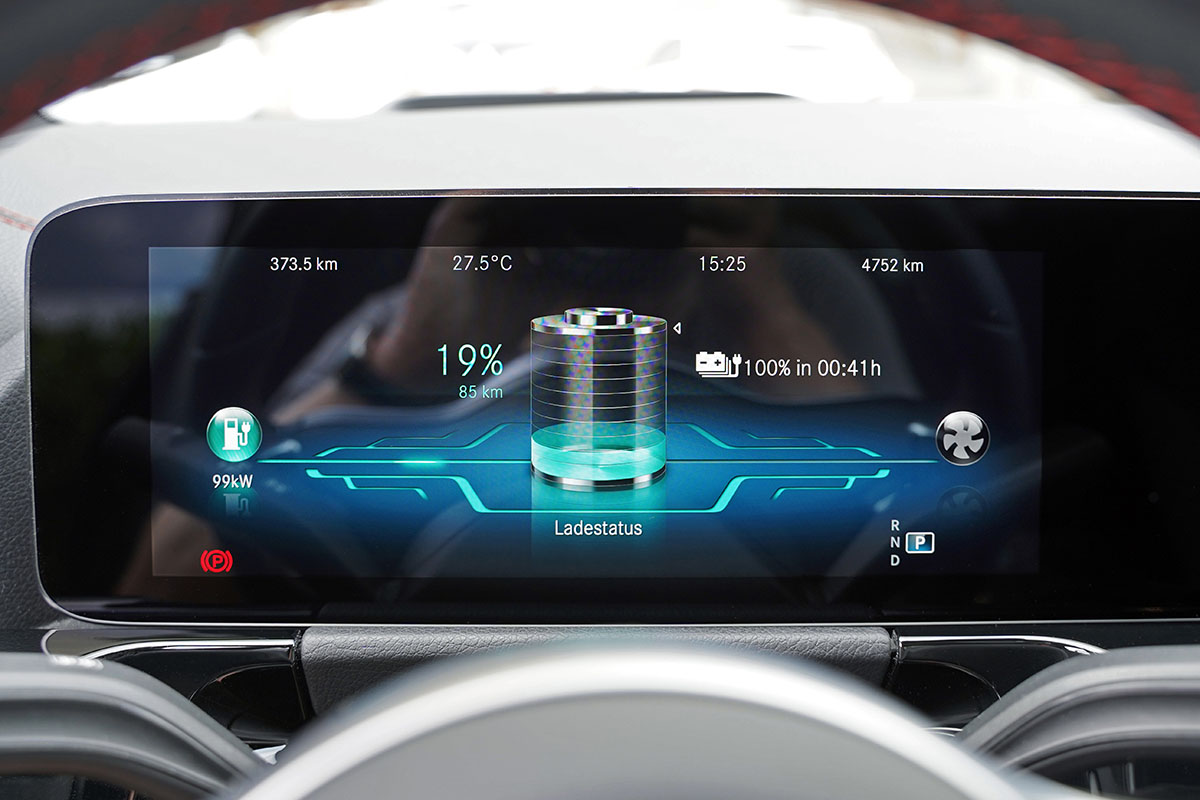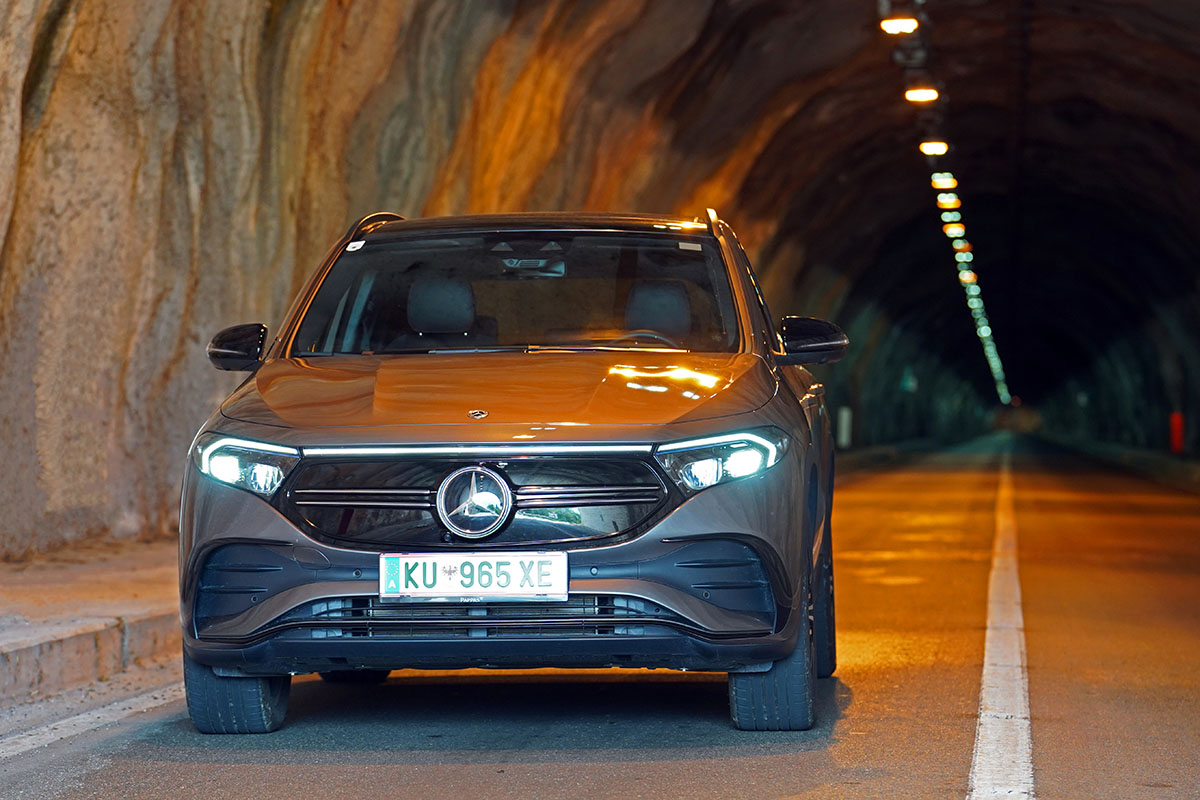Riva del Garda | Trentino – Mercedes-Benz and its fully electric-powered EQ-fleet have just arrived on the compact car scene. The front-wheel drive EQA 250 is the base model in the range. On a weekend trip to Lake Garda the Mercedes EV could prove its worth for long journeys…
The Pappas car dealership has 25 locations in Austria. In terms of what’s on offer, the dealership sells vehicles by Mercedes-Benz, AMG, Smart and Jeep. Pappas Tyrol, at their Kirchbichl location, provided me with the new Mercedes-Benz EQA 250 in the “Metallic – Mountain Grey” colour for my multi-day test. From the front it’s clearly distinguishable from its close relative, the GLA, by its black radiator grille. In the “AMG Line” package the grill has a glossy black frame with twin-blade design in chrome. Full-LED headlights with blue accents hint at the new electric powertrain. The rear lights also deviate from its conventionally-powered brother by way of a connecting LED light band. The centrally-mounted Mercedes badge serves as a hidden opener for the rear door.
I had decided on a trip to Lake Garda so that I could test how the EV handles long journeys. After picking up the car, my first stop was back home in PillerseeTal. The EQA is well planted on the road with its 19-inch, AMG alloy wheels and firmly constructed chassis, whereby comfort is never sacrificed. On arrival the battery charge (SoC) was at 86%. A good opportunity to test charging performance with a household plug. As expected, charging power clocked in at around 2.1 kW; after 5 hours the high-voltage battery was fully charged and ready for the journey south. Weekend bags for two people posed no challenge for the 340 litres of boot space. For larger luggage, the rear bench can be folded down in sections in a 40:20:40 split, then storage space amounts to 1,320 litres.
Over the Brenner Pass to Lake Garda
With the battery charged to 100% and a displayed range of 370 kilometres (230 miles), we set off bright and early on our way to Lake Garda. After I had inputted the destination into navigation, the expected arrival SoC appeared on display. The outward journey without a break should have left me with 15%. Coming to the top of the Brenner Pass at 1,370 m a.s.l (metres above sea level), the prediction fell to 12%. This was no cause for concern however, since we had already arrived at the highest point of our journey. In order to avoid a pitstop it occasionally recommended me to change to Eco driving mode. In this mode the system also displays our optimal speed. Very helpful information for travelling worry-free in an EV. Upon arriving in Riva del Garda after driving 327 kilometres (203 miles) the battery still had 16% charge with a predicted available range of 75 kilometres (47 miles). From the beginning of the journey the prediction had proved exactly right. The intelligent system manages this by incorporating an array of factors into its forecast, among them the driving situation and topography of the planned route. The displayed average consumption was at a low 16.6 kWh/100 km (62 mi). It is worth bearing in mind, however, that the starting point was 850 m a.s.l., while the destination was just 70 m a.s.l.
DRIVETRAIN AND BATTERY
The EQA is driven by an asynchronous motor on its front axle. Together the single-speed gearbox, cooling system and power electronics form the electric drivetrain. The EQA has a power output of 140 kW (187 hp) and 375 Nm (277 ft-lb) of torque. With this driving the wheels the 4.5 metre-long, 2,040 kg electric Mercedes accelerates from 0 to 100 km/h (62 mph) in 8.9 seconds. Top speed is electronically limited to 160 km/h (99 mph). These certainly aren’t performance figures, but I made quick progress and was never wanting for more power.
The lithium-ion battery, which consists of five modules, is located under the floor and serves as a structural element to the design. Despite the body being lower to the ground, the electric SUV has more than 200 mm of ground clearance. From the maximum voltage of 420 volts and a nominal capacity of 190 Ah (amp hours), the battery has a gross capacity of 79.8 kWh. The EQA’s sophisticated thermal management system cools or heats the battery when required with a thermal architecture, circulating coolant underneath the floor. The heat pump included as standard uses waste heat and ambient heat in order to heat the car interior. Via gearshift paddles behind the steering wheel you can also adjust recuperation to recover electrical energy.
INTERIOR DESIGNED FOR COMFORT
The firmly upholstered sporty seats offer good lateral support and are electrically adjustable via buttons in the door panel. Seat cushions and backs have been lined with Dinamica microfibre material, whereas a leather substitute has been used for the rest. Passenger space is very good for this class of vehicle and even long journeys are comfortable. A free-standing unit, with two integrated, 10.25-inch screens, serves as the instrument panel. The screens’ appearance can be set individually. By swiping and clicking on the small touchpad located on the left side of the steering wheel you can switch between different viewing modes. The right-hand media display can be controlled via its touchscreen, but it can also be operated with the controls in the middle console and on the steering wheel. Furthermore, the majority of functions can also be controlled via voice commands. The real show-stoppers on the dash are the five backlit, turbine-like air vents. Further on the passenger side is also the backlit, spiral-look trim. Ambient lighting can be changed to one of 64 colours. All in all, the interior strikes a highly modern and lavish appearance.
LAKE-SIDE CHARGING
From my research I found that the only quick-charging station with three-phase charging around Lake Garda is located in Riva del Garda, so the decision as for where we would be staying was settled quickly. The aforementioned DC charging station (100 kW), located in Piazza Catena near to the ship mooring points, is run by Neogy, a joint venture from Alperia and Dolomiti Energia, which are the two largest energy companies in the north-italian region of Trentino Alto Adige. After the outward journey and a short break at our accommodation, we made our way to the charging station. Occupied when we arrived, I could begin the charging process after a half-an-hour wait. Since I was travelling without a Charge Card, I scanned the station’s QR code with my smartphone to get to the Neogy website. After inputting my contact details, I chose my desired charging tower and output power; thereafter the price was displayed as €0.75/kWh (£0.64/kWh). I authorised the maximum amount with Paypal and started charging at 15% battery. After 29 minutes and 5 seconds I reached 80% SoC and 45 kWh at the maximum charging rate of 99 kW.
Following that we visited the Porto San Nicolò yacht marina on the other side of Riva del Garda. To round off the day, I drove the famous Gardesana Occidentale on the west shore of Lake Garda. There, James Bond was involved in a spectacular car chase through its numerous tunnels and galleries in the film “Quantum of Solace”. On day two we made our way to Ledro Valley through two winding tunnels, together almost 5 kilometres long. After a winding stretch of road with several hairpin bends, we soon reached the beautiful Lake Ledro at 655 m a.s.l. A fantastic spot in the Lake Garda mountains, the crystal-clear water reflects the mountains surrounding the lake. After a total 129 kilometres (80 miles) the length of Lake Garda and in the surrounding mountains, we arrived at the Neogy charging station in the “Viale Cannella” car park in Riva del Garda, still at 32% SoC. According to the EQA’s display, the consumption for the journey was 22.4 kWh/100 km (62 mi). Two type-2 charging stations (22 kW) were offered there. In 4 hours and 35 minutes, the 11 kW charging rate had charged 49 kWh and the high-voltage battery was back to 100%. The charging process worked like the day before, this time with the price at €0.47/kWh (£0.40/kWh). We spent the charging time at our accommodation, since this station was only 10 minutes away on foot.
EXTENSIVE DRIVING ASSISTS
The Mercedes EV has all the driving aids currently available. Included is Active Distance Assist, which maintains a predetermined distance from the vehicle in front by automatically braking and accelerating. Since this can only use half of the vehicle’s braking power, the Active Brake Assist also comes into play when in danger of a collision. In optimal conditions, the system also autonomously keeps to your lane. The assistance systems all worked very well. Only the Traffic Sign Assist caused some unpleasant moments, when despite staying on the motorway, the computer automatically registered speed limit signs of several exits and the car would suddenly brake hard again and again.
IN THE MOUNTAINS AROUND RIVA DEL GARDA
The time had come for our departure. After breakfast we drove once again into the Lake Garda mountains in the glorious sunshine. This time northbound on the Strada Provinciale 37 towards Lake Tenno. After a multitude of bends and a stark change in altitude, the Castello di Tenno soon appeared on the opposite side of the valley to us. In its namesake commune you can find Europe’s northernmost olive groves. On the return journey we always had an excellent view of Lake Garda. Arriving back in Riva del Garda, we began our journey home with 84% battery charge. During the journey the navigation system warned that a charging stop would be necessary, with the distance from the next charging point and estimated battery level appearing on screen. In our case we would have 16% when we reach the charging station. What’s more, it recommended we stop there for 8 minutes to charge up to 31%, so that we will arrive at our destination in Tyrol with 15%.
As the computer predicted, we arrived at the recommended IKB fast-charging station (150 kW) at a Europabrücke motorway service station with 16% SoC. To allow time for a short lunch we decided to charge to 80%; I inputted this into the media display as the charging limit. After scanning the QR code on my chosen charging tower I was brought to the “be.ENERGISED Community” website. Authorising the PayPal payment of €80 was uncomplicated since I was already a registered customer. Although Mercedes-Benz specifies the maximum charging rate as 100 kW, the EQA charged at a rate up to 112 kW. At that rate 45 kWh was charged in 27 minutes 35 seconds, then we could continue our journey. The tariff per minute was set at a very affordable €0.25/kWh (£0.21). After 279 kilometres (173 miles) and an average consumption of 18,8 kWh/100 km (62 mi), we arrived with 66% charge at our destination, Pappas Tyrol’s Kirchbichl branch.
ARMIN ELECTRIC CONCLUSION
The Mercedes-Benz EQA 250 proved to be a highly sophisticated EV. The compact SUV marries the virtues of its traditionally-powered brother, the GLA, with new driving technology. The high-quality outfitting left nothing to be desired in my test. Due to the intuitive design I didn’t need much time to familiarise myself. The modern chassis and great driving performance offer a comfortable ride. Average energy consumption during my trip to Lake Garda with 781 kilometres (485 miles) covered worked out to 18.9 kWh/100km (62 mi). The resultant real range of 350 kilometres (217 miles) proved the EQA to be more than suitable for long journeys. In Austria the price for the EQA 250 starts at €48,590 (£45.995 in the UK). The car supplied for the test with extensive extras comes to €64,766. A hefty price tag for a compact SUV, but it seems reasonable when considering what’s on offer.
Text and photos: Armin Hoyer – arminonbike.com
Title photo: Dagmar Berger

